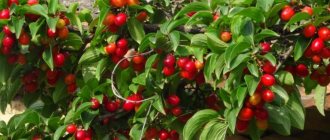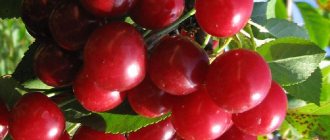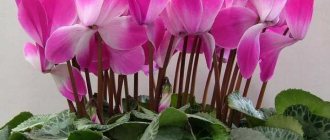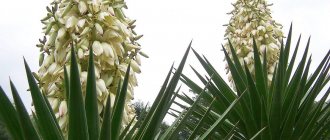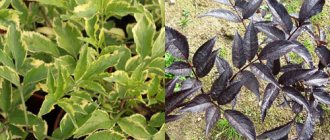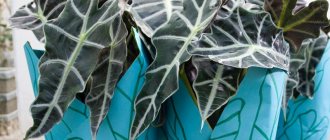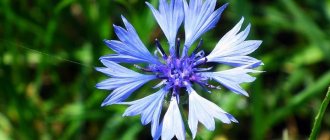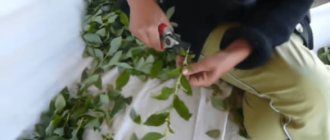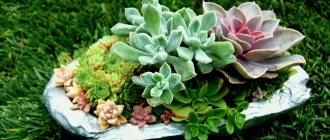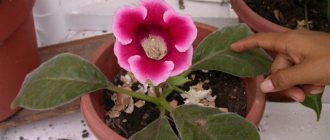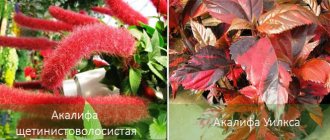What does an indoor Sansevieria flower look like (with photo)
This resilient and undemanding plant is perfect for beginning gardeners. And it looks very attractive - dense, fleshy basal leaves or leaves collected in a rosette with a glossy surface. The color depends on the type and variety of the plant. Basically the color range ranges from various shades of green with various white and yellow splashes or stripes. There are also more variegated varieties that have bright yellow, reddish, dark green, silver or golden patterns. They are mainly located across the leaf plate and can be either straight or zigzag. Varieties with spotted colors look good.
Sansevieria is often used as a home flower for landscaping in offices and educational institutions, and as a basis for floristic and botanical displays. Indeed, according to the NASA Clean Air study, the flower has amazing air-purifying qualities. It is capable of absorbing huge amounts of carbon dioxide and toxic substances, while releasing large volumes of oxygen.
Look at the photo of a beautiful indoor Sansevieria flower and make sure of its originality and uniqueness:
Types and varieties of sansevieria: photos, names and descriptions of popular varieties
Cultivation of the flower began in the 13th century, and today there are more than 200 species. In home floriculture, 10 of them are most common. All types of Sansevieria flowers can be divided into two types:
- With flat leaves.
- With wide thick leaves.
The names of the types of Sansevieria flowers that are most popular in home gardening are presented below:
Sansevieria trifasciata.
Great Sansevieria (Sansevieria grandis).
Sansevieria dooneri.
Sansevieria graceful (Sansevieria gracilis).
Sansevieria kirkii.
Sansevieria liberica.
Sansevieria hyacinthoides.
Sansevieria cylindrica.
Sansevieria trifasciata.
Sansevieria Zeylanica.
Below are photos of Sansevieria species with official names and brief descriptions:
The most famous is Sansevieria three-stripe with transversely striped flat leaves up to 60 cm long and a pointed, slightly widened top. It is because of this that the plant was nicknamed “mother-in-law’s tongue.” As a rule, the color is dark green with light milky transverse stripes.
Sansevieria large is a rosette of 3-4 leaves of a light green shade, 13-15 cm wide and up to half a meter high. Color characteristics are the presence of transverse dark stripes and a red rim on the edge of each leaf.
Sansevieria Duneri is a rosette of 15-20 straight fleshy leaves up to 3-4 cm wide and up to 40-45 cm long. The color of the plant is light green with dark green transverse stripes.
Sansevieria graceful has a stem up to 6-7 cm high, which serves as a base, and large oval leaves with a pointed end, covering the trunk. The plant is faded green in color with light transverse streaks.
Sansevieria Kirka is a type of plant that has a small root system and a rosette, around which up to 10 pale green leaves with old spots and dots are concentrated, and a brown or reddish stripe stretches along the edge.
Sansevieria Liberiana is a wide rosette with six flat, squat leaves up to 1 m long and up to 8-10 cm wide. The color is dark green with white zigzag transverse strokes.
Sansevieria hyacinth is a large species, up to 1 m in height, with fragrant blooms. The color is dark green with silver and gray stripes or spots.
Sansevieria cylindrical has cylindrical leaves up to 55 cm long, collected in a rosette. It has a dark green color with transverse gray stripes and a yellow edge.
Sansevieria Three-beam - in appearance almost identical to the three-band with the exception of a wide white stripe along the edge of the leaves.
Sansevieria zeylanica is the subject of long debate among plant growers and botanists, because many consider it not a species, but a variety bred from the three-lane Sansevieria. It has wide leaves up to 40 cm long with pronounced silver and green specks.
According to the nature of their growth, all varieties of Sansevieria can be divided into two groups. The first ones grow from a rounded rosette consisting of 6-10 leaves. The latter are a plant consisting of basal leaves growing both together and separately.
Photos of such varietal varieties of Sansevieria and their names are offered below for general information:
All varieties of Sansevieria flowers are beautiful in their own way; they look great both in oblong pots and when planted alone. Most common varieties are bred from the three-striped plant species.
The variety "Laurentii" is characterized by yellow edges on the edge of each of the leaves, of which, as a rule, there are up to 6 pieces and they are collected in a rounded rosette. Reaches a height of up to 1 m, the leaves are hard and fleshy with a pointed end at the top.
White sansevieria (“Sensation Bantel”, “Bantel's Sensation”) is a varietal variety bred from one of the oldest and most common varieties - “Laurentii”. The main feature is the pronounced white longitudinal stripes alternating with dark green areas. The leaves are straight and hard with characteristic transverse lines.
"Nelson" is also a descendant of the "Laurentii" variety, bred in 1944. Dark green velvety leaves grow up to 60 cm in height. Refers to slow growing varieties.
"Compacta" is another modern descendant of the "Laurentii" variety. This variety is almost identical in appearance to its ancestor, but with the exception of a few nuances. The leaves are slightly shorter and thinner, and may curl slightly inward. The leaf has a yellow border along the edge, and a dark shade of green in the center.
Photos of Sansevieria flowers of the varieties "Laurentii", "Compacta", "Nelsonii" and "Bantel's Sensation" are presented below for detailed information - pay attention to them:
Also beautiful are small rosette varieties with wider leaves, such as Sansevieria trifasciata “Golden Hahnii” and “Silver Hahnii”:
They are both varietal varieties of the popular Sansevieria variety called "Hahnii". They grow short and compact, which attracts growers with a limited amount of free space in the house. The structure of the leaves is also identical to that of the “progenitor”; leaves from 6 to 10 pieces are collected in neat round rosettes. Their main difference is their color.
In the “Golden Hahnii” variety they are yellow-green with golden stripes,
and “Silver Hahnii” has a green-gray color with silver patterns.
Images and names of Sansevieria varieties bred from the cylindrical species are presented below. These are the varieties:
- "Twister"
- "Mikado"
- "Spike"
- "Spaghetti"
The first from this list is unique in that it has good sheet flexibility and, thanks to this, can be formed using the bonsai technique. It grows up to 1 m long and has dense leaves of dark shades of green.
"Mikado" is a rather rare variety. It grows up to 50 cm in height, the fleshy, dense leaves of a light green hue have dark green stripes placed across them.
“Spike” is a variety that is interesting because the leaves grow not from a rosette, but from the base of the trunk, arranged alternately.
“Spaghetti” has dense rounded sheets up to 50 cm high and a pointed tip. Grows, forming a rosette of 6-9 shoots.
Interesting and attractive varieties of Sansevieria with photos and official names are described below for detailed information:
The following varieties can rightfully be considered the most original:
- "Silver Moon"
- "Francisi"
- "Pingicula"
- "Twisted Sister"
“Silver Moon” or, as it is called, Moonshine, which translated means “Moonlight”, is a relatively recently bred variety with dense, monochromatic leaves of a gray-green hue with a silvery sheen.
'Francisi' (Sansevieria francisii) is a stunning variety that has densely packed, short, rounded leaves with a pointed tip and thorn-like appearance. The basis of the plant is a dense stem up to half a meter long, from which foliage grows no more than 10 cm long.
"Pingicula" (Sansevieria pinguicula) , or simply "walking", has large thick leaves with a pointed tip, growing on a short trunk. The main feature of this variety is that it reproduces not by the root system, but by aerial stolons. They look like some kind of “whiskers”, at the tips of which new flowers begin to grow.
“Twisted Sister” (“Twisted Sister”, i.e. “Twisted Sister”) is a variety that is a low, wide rosette with wide, curled leaves of dark olive tones with yellow stripes along the edge.
General information
Currently, many hybrids and varieties of Sansevieria have been developed. Among them are the main types:
– Sansevieria three-lane – most often found on our window sills. A distinctive feature is long dark green leaves with transverse stripes that reach 1 meter in height and 10 cm in width. The leaf tapers from bottom to top, the tip is pointed. Habitat in the wild - African deserts;
- – Sansevieria Hanni – forms a dwarf wide rosette directly from the root. The leaves are dense, green with a silvery tint. The shape resembles a vase;
- – Sansevieria Cylindrica (cylinder) – as the name suggests, the flower has the shape of a cylinder. The leaves are narrowed with sharp tips that can easily be injured. The leaf pattern is unusual - with vertical silver and golden stripes;
- – Sansevieria Laurenti – this species formed the basis for the development of modern varieties. In addition to the classic transverse stripes, the long leaves have a yellow edging. The intensity of leaf color directly depends on the lighting: the higher it is, the brighter and more beautiful the plant. And, conversely, with insufficient lighting, Sansevieria “turns green”, the yellow stripe disappears, thereby losing the decorative effect of the flower;
- – Sansevieria Zeylanika – this variety has sword-shaped variegated green leaves, is distinguished by its comparative unpretentiousness and beautiful appearance.
How to properly care for Sansevieria at home
Caring for sansevieria at home is a simple matter. This not capricious plant gets sick quite rarely. The basic requirements for successfully growing a healthy plant are soil temperature and moisture. The flower treats other factors leniently. Fundamental nuances for the growth of sansevieria:
- Location.
- Temperature.
- Air humidity.
- Substrate.
- Watering.
- Feeding.
In principle, any place is suitable for growing sansevieria flowers, but not under the bright sun. Direct sunlight (especially hot summer rays) can burn the leaves and cause the color to fade. But you should not overuse the shadow, this will cause the leaf plate to fade and make the pattern inconspicuous or destroy it altogether. Window sills on the south, east and west sides are best suited.
This is a very strong and resilient plant and in nature it is not afraid of changes in air temperature. However, indoor representatives may not be so favorable to such changes, especially if these are low temperatures and severe frosts. Therefore, in order to avoid diseases and difficulties in growing, it is best not to allow the room temperature to drop below +10 °C. As for high temperatures, Sansevieria can survive at 28-30 °C.
Air humidity does not play a role in proper care of sansevieria flowers. However, in sultry heat it is worth wiping each leaf of the plant with a damp cloth or sponge. Thus, not only will a layer of dust be removed, but the level of humidity around the green “pet” of the home greenhouse will also increase. This plant does not require spraying with water from a spray bottle.
As for soil, a standard flower potting mix for ornamental foliage plants works well. The main requirement for filler is the ability to dry quickly and be well drained. This plant prefers a loose humus substrate; it is not heavy and allows the root system to develop freely without any difficulties.
In terms of watering, care for home sansevieria flowers should be taken under careful control. It is only necessary to maintain humidity and avoid stagnant waterlogging. By its nature it is a succulent plant, i.e. a flower that has special tissues where liquid accumulates. This structure is characteristic of all plant species growing in arid regions. Thanks to this, Sansevieria does not require frequent watering.
It easily tolerates hard water and slight drought, but excessive watering is detrimental to it. If there is an excess of moisture, the root system almost immediately rots, and gray rot spreads to the leaves.
It is necessary to fertilize every 3 weeks in the summer. In winter you can do without fertilizing. It is best to use mineral oils and fertilizers for cacti and succulents for feeding. The only thing worth paying attention to is the composition of the mixture. The fertilizer should not have an adjusted nitrogen content, because it stimulates the production of the green pigment - chlorophyll, which will lead to discoloration of all crop patterns.
Watch a video about how to properly care for sansevieria at home and what you should pay attention to when growing:
Maintenance and care
Care: Sansevieria is light-loving, but can grow well in partial shade.
It should be remembered that the less sunlight hits the plant, the paler the leaf and the less expressive the pattern on it. However, direct sunlight is contraindicated for the plant. A pot with “mother-in-law’s tongue” is gradually accustomed to the sun. It needs to be watered once a week in the summer and once a month in the winter. With excessive watering, the leaves turn yellow and fall off, and the roots often rot. To avoid rotting of the leaf rosette, it is recommended to water through a tray. There is no need to spray the plant. The best way to combat dust is by wiping the leaves with a damp cloth.
Feeding: Feeding is carried out in the summer, water the flower with water with a diluted mineral fertilizer for cacti and succulents, in a weak concentration.
Important: Watering the plants after transplantation is carried out no earlier than 2-3 days later. Reproduction: There are two ways to propagate Sansevieria
Propagation: There are two ways to propagate Sansevieria.
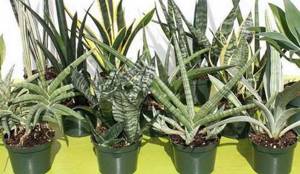
By dividing the rhizome during transplantation. Take an old overgrown plant and use a sharp knife to separate the part with the growing point or shoot from it.
Only when propagated by rhizomes are the varietal properties of sansevieria preserved.
Leaf cuttings in spring. For this, an old sheet is suitable, which is divided crosswise into several parts, each of which is at least four to six centimeters. They should lie in the open air for several days until the cut surface dries out. Then the cuttings are planted in picking boxes to a depth of one or two centimeters in a soil mixture of coarse sand and peat and placed in a warm (about 30 degrees) bright place without direct sunlight and humidified the air. At the site of the cut, adventitious roots are formed. It is better to grow cuttings in a small greenhouse.
Of the harmful insects, the most common are mealybugs and root aphids. The wax threads or grains of scale insects look like small cotton swabs. You can try to knock them off with a stream of water or remove them manually. Red spider mites and thrips can ruin the appearance of sansevieria. To combat them, use insecticides, wipe the leaves with a damp cloth, and increase the humidity around the flower.
Sansevieria juice contains substances - saponins, which have anti-inflammatory, choleretic, and laxative effects. In folk medicine, the plant is used for cuts, inflammation of the oral cavity and genitourinary system. In cosmetology, saponins are used as foaming agents in the production of liquid soap, gels, and shampoos.
Planting and transplanting sansevieria into a new pot at home (with video)
When caring for sansevieria flowers at home, it is very important to choose a suitable pot. It should be spacious, as many thick rhizomes are formed that will tear apart a small pot. For a young plant, a container of 2.5-3 liters is suitable, and for a grown one - at least 5 liters in volume. You should not plant it in a very deep container because the root system of the flower is superficial.
Replanting for Sansevieria at home will be required every year for young representatives, and for an older plant (3.5-4 years) the pot can be changed every 2 years as the roots grow. The new pot should be 1.5-2 cm larger in diameter than the previous one.
Planting a sansevieria plant can be done in self-prepared soil. To do this, you need to mix leaf soil, sand and peat. But keep in mind that sand should be at least 30% of the total volume of the soil mixture. And be sure to heat the prepared soil in the oven or steam to disinfect it from pathogens.
Watch a video about care when transplanting sansevieria at home to facilitate the growing process:
Which pot and substrate to choose
A tall and narrow (cylindrical and with edges) pot with drainage holes in the bottom is selected for the pike tail . The height of the container should not be less than a third of the length of the leaves. It is better to choose heavy ceramic flowerpots; gravel is poured into the bottom of plastic pots to make them heavier.
On a note. Sansevieria is planted in pots one plant at a time or in a group. Several specimens planted in a row look picturesque. They form a spectacular green wall and can divide the space of a room into zones.
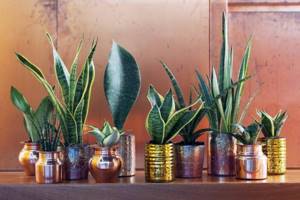
The soil should be loose and fertile. It includes:
- peat 2 parts;
- fertile soil (leaf humus) 2 parts;
- vermiculite or perlite 1 part.
Article on the topic: “It’s forbidden to live luxuriously”: the castle of Pugacheva and Galkin [interior and exterior]
You can purchase substrate for palm trees or cacti at the store. It is necessary to have a drainage layer of expanded clay or gravel at the bottom of the pot, 2-4 cm thick.
Rooting when propagating Sansevieria at home with leaves and cuttings
Since this plant is very easy to propagate, you just need to get a side shoot. At home, the plant is propagated by vegetative methods. Options for propagating Sansevieria flowers at home:
- By dividing the rhizome.
- Side shoots.
- Leaf cuttings.
In the spring or during a planned transplant, it can be propagated by dividing the rhizomes. To do this, remove the plant from the pot and remove the remaining soil from the root system - carefully, without damaging the roots themselves. Then, using a sharp knife or scissors, cut off the shoot with part of the root system, disinfecting the cut site with crushed activated carbon. Now all that remains is to pour the nutrient substrate into the pot, make a hole and plant the cut shoot. Don't forget to water well at the end.
Rooting a sansevieria flower by separating side shoots is used only in spring and mainly for low-growing varieties. To do this, the young shoot is cut off or carefully broken off along with a small part of the root system. The cut areas are treated with crushed coal, and then planted in a new pot and fresh soil. After this, you need to water it with clean water.
Tall and monochromatic varieties are most often propagated using leaf cuttings. The main disadvantage of this method is that the offspring grown from the leaf will not retain the color and pattern of the mother plant. But for varieties without pronounced painting, this method is quite suitable.
How to properly propagate Sansevieria from leaves
When propagating sansevieria by leaf, you need to select an adult healthy leaf, cut it with a clean knife into several strips 4-5 cm wide. Then place it on a napkin or towel and dry for 20-26 hours. Then it is enough to plant the fragments in wet sand. For better rooting, you can cover the pot with film or a plastic bottle. With this method of propagation, watering after planting is carried out through the flower tray.
The video below shows and explains in detail how to properly propagate Sansevieria by leaf for its good survival rate:
To make the process easier, watch the video for the propagation and planting procedure.
Diseases and insect pests of Sansevieria (with video)
Pests and diseases are rare, but of all possible ones they can be:
- Spider mite.
- Thrips.
- Chervets.
- Anthracnose.
- Root rot.
Photos and descriptions of sansevieria infected with various ailments are presented below for review and study in order to prevent:
Since this is a strong plant with good immunity, most often at the first manifestations of infection it can be eliminated in time without much effort or complications.
Diseases of the Sansevieria plant occur extremely rarely, but with excessively abundant or frequent watering, the soil does not dry out, and the humid environment creates favorable conditions for the development of putrefactive bacteria. After which the root system becomes moldy and gradually rots.
Insect pests of Sansevieria also bring a lot of inconvenience and problems. If thin white cobwebs and sticky drops appear on the underside of the leaf, it is necessary to carry out a manual cleaning course. Such signs indicate the presence of a spider mite. To eliminate it, simply use a damp cloth or rag to remove all foci of infection and treat these areas with Actellik or a solution of laundry soap.
But in general, caring for the crop is not difficult; it is enough to follow a few instructions, and the plant will delight the eye for many years. How to examine for infection and how to treat ailments is described in detail in the video about Sansevieria presented below:
Mother-in-law's tongue, pike tail
Name: mother-in-law's tongue, pike tail, sansevieria, sansevieria (Sansevieria)
Family: Agave (Agavaceae)
This plant species is native to tropical Africa, although there are about 60 different species of Sansevieria. All of them grow in tropical areas with a dry climate, so they have fleshy leaves.
The elegant, long, tall, rigid leaves of the piketail (Sansevieria), sword-shaped, pointed at the end, dark green in color with horizontal stripes of light gray-green color, emerging as a rosette, make Sansevieria one of the most unusual plants among succulents. It will serve as a wonderful background for plants with feathery leaves.
This plant has many popular names: in Russia it is called pike host, in the USA snake braid, and in Great Britain mother-in-law's tongue or devil's tongue. The flower received its scientific name in honor of Sanseviero, a Neapolitan prince, or there is also an opinion named after Raimondo di Sangro San Severino, an Italian prince.
flowers pike tail
Despite Sansevieria’s dislike for waterlogging, the flower can be grown using hydroponics.
Selection and purchase
Choose a plant without signs of wilting on the leaves and without damaged edges. The plant must be well rooted; without a strong root system, it can topple over and be damaged.
Sansevieria care
Location
It grows well in well-lit places, even with little direct sunlight, although it can withstand shade. In summer, the plant needs high temperatures.
In winter, at lower temperatures, it is recommended to reduce watering; the soil may be almost dry.
The plant is resistant to low air humidity, strong winds and can do almost without water, that is, it does not need careful care.
sansevieria species
Watering
The soil
The soil should be fairly light, with a high peat content.
Mother-in-law's tongue flower
A tall inflorescence with small yellow flowers resembling stars grows next to the leaves directly from the soil.
Sansevieria blooms
Sansevieria propagation
Trim sections of leaves crosswise and plant them vertically in the soil in a warm room. After a few weeks they will take root and you will have new plants. During the growth period, suckers appear - small plants near the base of the leaf, which can be separated from the mother shoot and transplanted into other pots.
Transfer
The plant is transplanted extremely rarely. It is enough to apply fertilizer once a year to keep the plant looking strong.
Sansevieria species photo
A common variety is 'Laurentii', which has a whitish-cream leaf edge.
sansevieria trifasciata laurentii
Golden Hahnii has a green central part of the leaf and cream-colored side leaves.
pike tail plant
The most common variety is Taurentii, with a golden-yellow edge along the edge of the leaf, sometimes blooming in racemes of creamy white flowers.
flowers mother-in-law's tongue
Silver Hahnii has silver leaves with dark green spots.
sansevieria photo
Pests and diseases of sansevieria
Rot at the base of the leaves: overwatering during cold periods, adjust watering and place the plant in a warm place.
Pale leaves: insufficient light, move the plant to a brighter area.
Brown spots on leaves: overwatering, reduce watering frequency, allow soil to dry out.
Sometimes cobweb spots appear on the leaves, a sure sign of mealybug infestation. Remove it with cotton wool soaked in alcohol.
Similar plants:
- Zamioculcas glossy
- Fatsia japonica
- Asparagus species
Why do Sansevieria leaves turn yellow and brown spots appear?
Brown spots on the surface of sansevieria may appear due to a disease called anthracnose. In the initial stages, the affected areas in the form of small dots and small spots are almost invisible. As the disease progresses, the infection spreads, turning into white and yellow crusts, and then the leaf dries out and dies. To treat the flower, fungicide treatment is used. Anthracnose may be the answer to the problem of why Sansevieria is gradually turning yellow. As a rule, overmoistening of the earthen clod can contribute to infection.
This plant does not tolerate stagnation of water and abundant watering. At the first signs of infection, you can try to cure your green pet with soap treatments. To do this, just wash each sheet with a solution of laundry soap and then with clean water.
At the first sign that the leaves of Sansevieria are turning yellow in spots, it may indicate the presence of pests such as thrips. These small insects, when infecting a plant, initially cause the appearance of small yellowed or simply faded spots, and then the spots increase in size until the entire leaf dries out. For treatment, it is necessary to treat the plant with insecticides such as Fitoverma or Actellika.
The mealybug or, as it is also called, the hairy louse, reveals its presence by the presence of a white, waxy coating on the leaves of the plant. These insects are very mobile and visible to the naked eye. To eliminate them, you need to remove them with a wet sponge and treat the affected areas with karbofos.
If Sansevieria gradually turns yellow, then, in addition to pests and diseases, this can be caused by simple waterlogging of the soil or stagnation of water in the outlet. To avoid this problem, you need to carefully monitor the abundance and frequency of watering.
